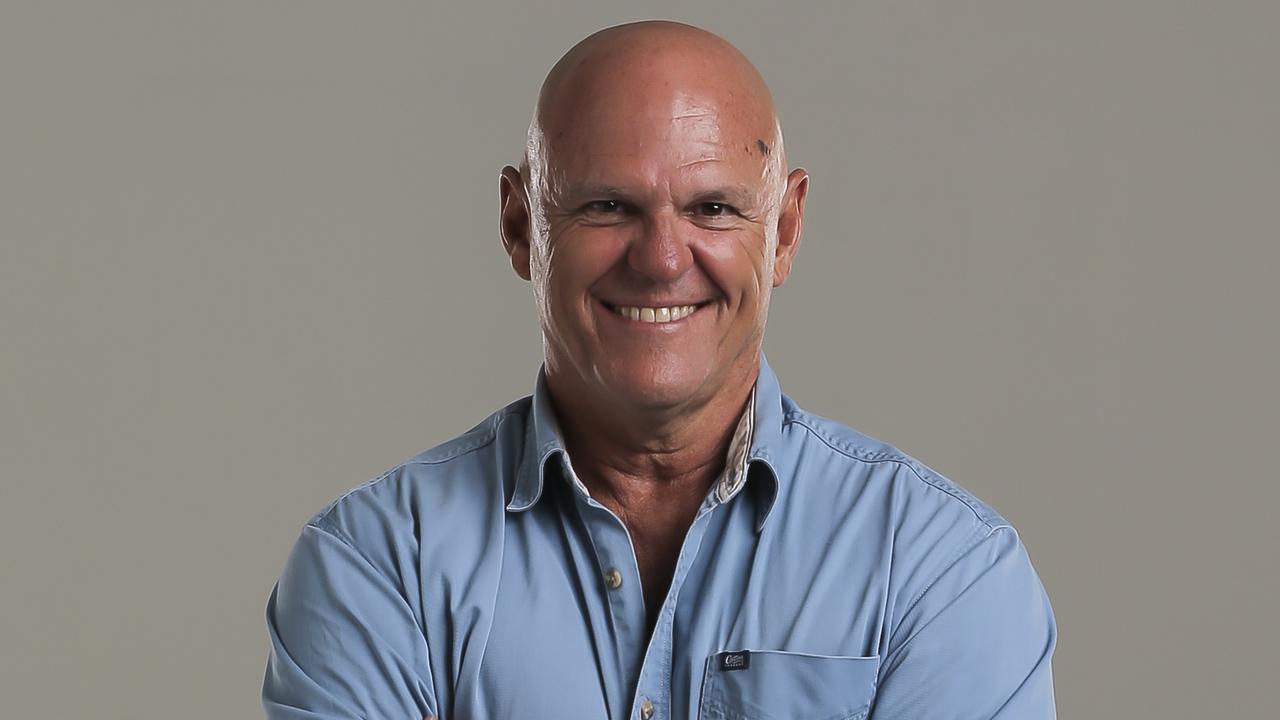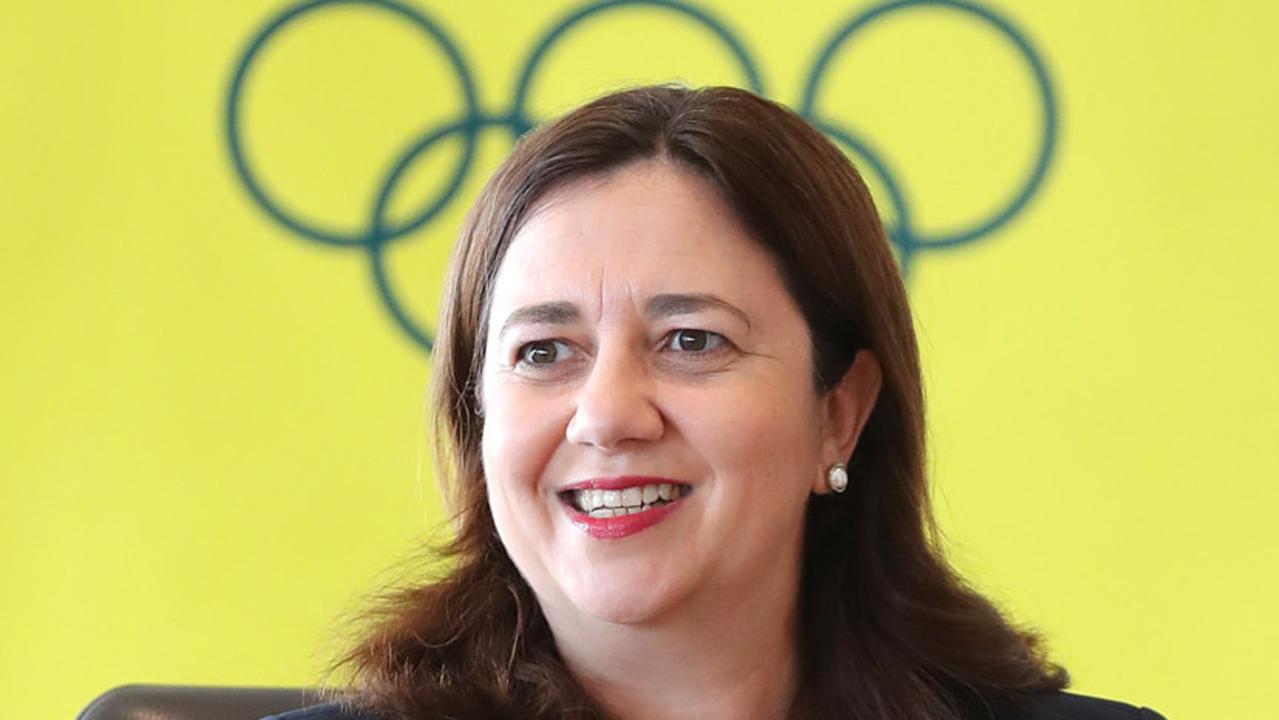Fortnite Battle Royale: Losing battle to play it safe
THE debate around gaming and violence has been reignited as millions of children get hooked on a new craze, writes Jennifer Dudley-Nicholson.
Opinion
Don't miss out on the headlines from Opinion. Followed categories will be added to My News.
YOU’RE unarmed, surrounded by 99 mortal enemies, and about to parachute out of a flying bus. When you land on the island below, everyone you meet will be out to kill you, and you must gather weapons, build structures, and outmanoeuvre them all to stay alive.
Plus, you can bust out a signature dance move whenever the mood strikes.
This is the idea behind Fortnite Battle Royale, a winner-takes-all video game described as “Minecraft meets Hunger Games” that has attracted more than 45 million players worldwide.

But the massively popular title is also a lightning rod for controversy.
While some describe Fortnite as another Pokemon Go-style gaming craze, and even a good excuse for family play, others are petitioning to ban the game in Australia for violent content aimed at children, and claim its addictive nature is already having an impact in the classroom.
Whichever take you believe, there’s no denying the game’s popularity.
Created by Epic Games, Fortnite was released in July last year but it wasn’t until September, when a second, free version of the game launched pitting player against player that its popularity skyrocketed.
Available on game consoles, smartphones, and tablets, Fortnite is now the fifth most popular free app in Apple’s App Store, raked in almost $400 million in April alone, and has hosted a record 3.4 million players in a single match.
And it’s not just popular overseas. Cyber safety educator Leonie Smith said Australian pre-teens were wildly enthusiastic about the game.
“I’ll go to primary schools and I’ll say ‘Who is playing Roblox? Who is playing Minecraft?’ and kids will raise their hands,” she says. “Then I’ll say, ‘Who is playing Fortnite?’ and they just starting jumping up and down in the air and screaming like idiots. There’s a huge reaction.
“The feedback I’m getting from parents and teachers is that it’s very addictive, kids play a lot of it, and then they go to school and talk about it constantly, and even watch videos of other kids playing it,” Ms Smith said.
And the rewards for Fortnite skills can be lucrative. Epic Games has pledged to back Fortnite e-sports tournament prize pools with $US100 million ($132 million) over the upcoming financial year, in an announcement that made it the richest game to play.
There is also money to be made training new players, with tutors offering services across social media, and even more money streaming gameplay tutorials.

Well-known live-streaming Fortnite player, Tyler “Ninja” Blevins, estimates he makes $US560,000 a month from his broadcasts on the platform Twitch.
But Interactive Games and Entertainment Association chief executive Ron Curry said most players weren’t lured by the money, but that the game itself was funny, involved strategy, let you play in teams with friends, and demanded your attention.
“It’s a game that forces you to play straight away,” he said. “You can’t just start the game and sit back. You have to jump in the game and enjoy it. It’s fairly quick, it’s quirky, and it’s witty. It’s hard to find what the magic solution is for the perfect game, but this seems to have pulled all those elements together.”
Mr Curry said the fact that Fortnite was free to play had also helped fuel its popularity. The developers instead make money through in-game purchases, also known as microtransactions, for character customisations like costumes or even signature victory dances. Two costumes will set you back $38.99, and purchases range from $14.99 to $159.99.
It’s transactions like these that have seen money spent on digital game content in Australia climb 9 per cent over the past year, and outnumber physical game sales with revenue of more than $2 billion.
Smartly, though, Mr Curry said, the purchases don’t affect players’ success in the game, meaning kids can just as easily play without spending a dollar.
Instead, criticism of Fortnite has centred on its content and addictive nature.
Such is the obsession of some children, British Culture Secretary Matt Hancock issued a warning that “too much screen time could have a damaging impact on our children’s lives,” and the Government would “work alongside game publishers, developers, and other agencies” to support safe play.
One Australian group wants to go a step further and is petitioning the Australian Classification Board to ban Fortnite, and has more than 650 supporters so far.
The petition argues the game’s content desensitises children to violence, and will create “the next generation of violent convicts”.
But Ms Smith said the game was designed for children aged 12 and over, violence was presented in a cartoon-style, and parents should decide whether to allow their children to play the game based on their maturity.
“If you’re a parent who doesn’t like first-person shooter games or weaponry because of what they represent, then you’re not going to like this game very much,” she said.
“But as far as comparing a game like Fortnite to Call of Duty, they are like chalk and cheese.”
Mr Curry said an easy way to decide whether the content was right for your child, and to set time limits, was to play the game with them.
“Sit down next to them, watch them, and even pick up a controller,” he said. “It will help you understand the content but also understand why your child is playing this, what they are getting out of it. It’s a great way to have a conversation about media with your child.”
Just don’t be surprised if you’re sucked into playing Fortnite with millions of others.


